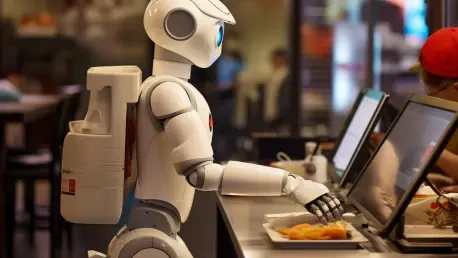The tech industry stands at a critical juncture, grappling with an unprecedented wave of layoffs—over 27,000 jobs lost in the sector since the start of significant AI integration. This staggering figure raises a pressing question: Is artificial intelligence the true force behind these cuts, or merely a convenient justification for deeper systemic issues? As companies race to adopt AI for efficiency, the human cost and strategic missteps have sparked heated debates. This roundup gathers insights from industry leaders, analysts, and affected workers to explore the multifaceted relationship between AI and job losses, aiming to uncover whether technology is a transformative tool or a corporate scapegoat.
Corporate Narratives: Efficiency or Excuse?
Insights from various industry observers reveal a split in how AI’s role in layoffs is perceived. Many corporate leaders highlight AI as a game-changer for cost reduction, pointing to substantial savings achieved through automation. For instance, reports indicate that certain tech giants have slashed billions in operational costs by replacing human roles with AI systems, framing these moves as necessary for staying competitive in a fast-evolving market.
However, a contrasting view emerges from workforce analysts who argue that AI often serves as a convenient narrative to mask other failings. They suggest that overhiring during economic booms and subsequent financial pressures are the real drivers behind many layoffs, with AI providing a palatable story for investors. This perspective casts doubt on whether automation is genuinely the root cause or simply a shield for poor strategic planning.
A third angle comes from mid-level managers within tech firms, who note that the push for AI adoption often lacks clear direction. They describe internal confusion where layoffs are announced under the banner of AI efficiency, yet the technology’s implementation remains incomplete or ineffective. This inconsistency suggests a rush to appear innovative rather than a calculated shift toward sustainable automation.
Human Cost: Who Pays the Price?
Voices from the ground level paint a grim picture of AI’s impact on specific demographics. Workers in outsourced regions, such as Manila and Bangalore, share experiences of sudden job losses as companies turn to AI for tasks like data processing. These individuals, often in lower-wage roles, express frustration over the lack of support or retraining opportunities following such cuts.
Entry-level employees and recent graduates in major tech hubs also bear a heavy burden, according to career counselors. They observe a shrinking market for junior positions as AI takes over routine tasks, leaving young professionals struggling to gain a foothold. The traditional pathway into tech careers appears increasingly narrow, raising concerns about long-term skill development.
Labor advocates add another dimension, arguing that companies must prioritize human-centered approaches over short-term gains. They emphasize the need for transparency in how AI-driven decisions affect employees, urging firms to invest in reskilling programs rather than viewing workers as disposable. This call for balance highlights a growing tension between technological progress and workforce stability.
Strategic Pitfalls: Lessons from AI Implementation
Industry consultants provide critical insights into the strategic errors surrounding AI adoption. Many point to cases where companies have cut significant portions of their workforce—sometimes up to 40%—only to face quality issues and customer dissatisfaction. Such examples underscore the risks of over-reliance on automation for complex, empathy-driven tasks that still require human nuance.
Technology strategists offer a different take, focusing on the inconsistency in corporate approaches. They note that while some firms aggressively reduce headcount to fund AI research, others simultaneously train thousands of employees to work alongside these tools. This disparity suggests a lack of consensus on how to integrate AI effectively, often leading to reactive rather than deliberate decisions.
Economic analysts weigh in with a broader perspective, cautioning against the allure of immediate cost savings. They argue that premature automation can erode institutional knowledge and damage brand reputation, ultimately costing more than the initial layoffs saved. Their advice centers on a measured approach, blending AI capabilities with human expertise to avoid costly reversals.
Balancing Act: Can AI and Humans Coexist?
Perspectives on the future of work reveal a shared hope for collaboration between AI and human talent. Training specialists advocate for robust reskilling initiatives, citing successful programs where tens of thousands of employees have learned to leverage AI tools. They believe that hybrid roles, combining technological and human skills, could redefine career paths in the tech sector.
On the other hand, skeptics among industry watchers question whether companies are willing to invest in such long-term solutions. They point out that shareholder pressures often prioritize quick financial wins over sustainable workforce development, potentially widening the gap between technological advancement and job security. This concern underscores the need for systemic change in corporate priorities.
Employee feedback rounds out this discussion, with many expressing a desire for clarity and involvement in AI integration processes. Those who have transitioned to hybrid roles report greater job satisfaction when given the chance to adapt alongside technology, suggesting that inclusive strategies could mitigate the fallout from layoffs. Their stories highlight a path forward that values both innovation and human contribution.
Reflecting on the Debate and Moving Forward
Looking back, the diverse opinions gathered in this roundup paint a complex picture of AI’s role in tech layoffs, revealing a landscape marked by both opportunity and uncertainty. The insights from corporate leaders, workers, and analysts underscore the dual nature of AI as a tool for efficiency and a potential excuse for broader missteps. The human toll on vulnerable groups and the strategic errors in implementation stand out as critical areas of concern, while calls for collaboration offer a glimmer of hope.
Moving ahead, companies are encouraged to adopt a more transparent stance on how AI decisions impact their workforce, ensuring that employees are part of the conversation. Investing in reskilling and hybrid roles emerges as a practical step to bridge the gap between technological progress and job stability. Additionally, a deeper examination of strategic priorities is deemed essential to avoid the pitfalls of short-term thinking, paving the way for a future where AI enhances rather than displaces human potential.









